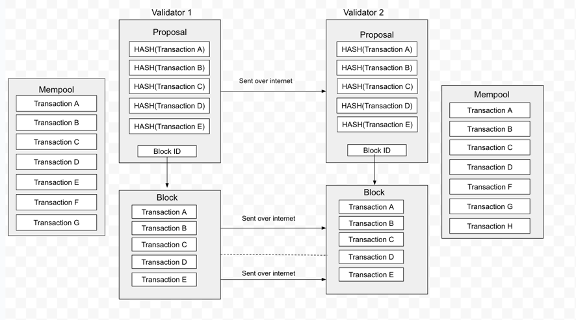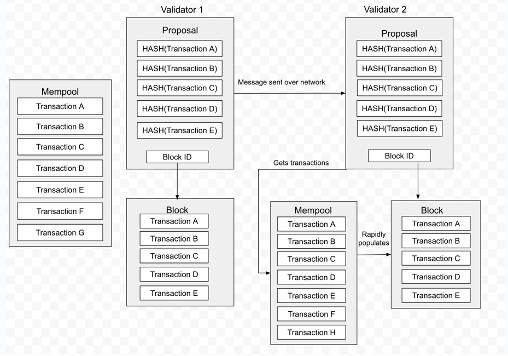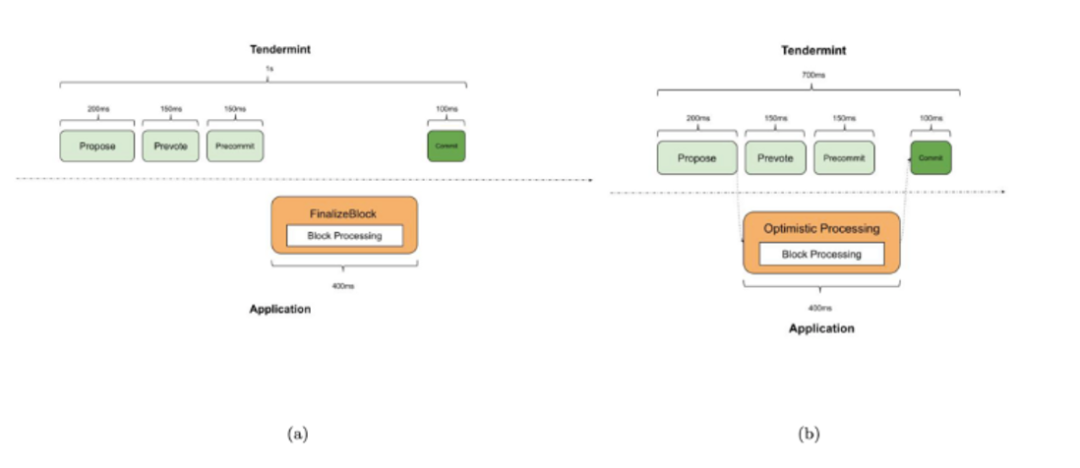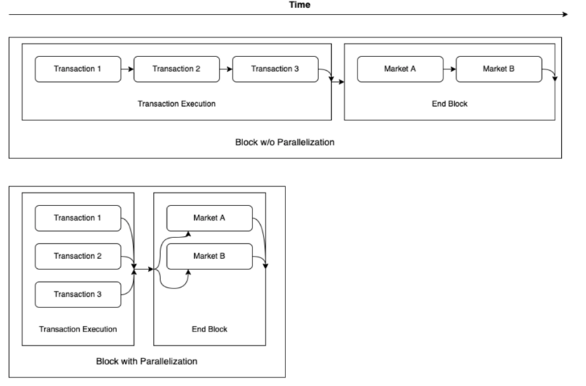Author: Kylo@Foresight Ventures
The emergence of blockchain technology and its ecosystem has provided many opportunities for innovators, developers, and users. However, scalability, transaction speed, and issues related to front-running transactions have been hindering Web3’s path to true mass adoption. The emergence of Sei is aimed at solving these problems.
This article mainly elaborates on the superiority of the Sei mechanism through the description of the basic mechanism of Sei. This report is divided into several specific sections, including “Introduction to the Sei mechanism,” “The thriving ecosystem of Sei,” “Comparison of Sei with other layer1 networks,” and “The unique advantages of Sei in transactions.”
Sei: Mechanism Introduction
Sei is a universal Layer1 network designed to solve various problems commonly found in layer1. It operates through the Twin-Turbo consensus mechanism and achieves fast confirmation of transactions, high throughput, and scalability through transaction parallelism. This innovative approach makes Sei a versatile and powerful platform that effectively bridges the gap between decentralization and high performance.
- Comparison and Analysis of SSV Network and Obol Network Technological Differences, User Experience, and Applicable Scenarios
- What are the technical advantages of Mantle’s transformation from DAO to Layer2?
- Technical Explanation | CertiK’s Advanced Formal Verification of Ant Group’s HyperEnclave
Twin-Turbo Consensus
Sei is a high TPS parallel Layer1 network, similar to DyDx’s Tendermint mechanism but with some differences in the consensus layer. To better understand the Sei mechanism, we need to understand the traditional block generation model. Block generation is achieved through consensus reached by validators by packaging transactions in their own mempool. Each network validator has its own mempool. When a transaction occurs, the user submits the information related to this transaction to a full node (which also belongs to a validator), and the full node sends the relevant information to other nodes in the network. This process is called gossip. Other nodes receive and verify the transaction information and add the transaction to their mempool. The proposer, who builds the block, sorts the transactions in their mempool, generates a block, and broadcasts the block information to the entire network. Other validators verify the block information from the proposer after reaching consensus. After successful verification, other validators accept the full block information from the proposer.

FIG.1.dumb block proLianGuaigation
From the above mechanism, two steps can be optimized:
- Since each validator has its own mempool, the transaction data in the new block may already exist in their respective mempools. Validators can generate blocks themselves without waiting for the proposer to send them detailed block data.
- The confirmation of blocks requires several processes, including block proposal, validator voting, consensus, and block broadcasting. Since these steps are carried out serially, there is no way to accelerate the process. If these steps can be processed in parallel, block performance can be significantly improved.
Sei has optimized the consensus layer based on the above two points. It defines its own consensus mechanism as Twin-Turbo Consensus, which is simply a smarter block propagation method and an optimistic block production mechanism.
The first turbo needs to solve two problems:
- Ensure that the mempool of each validator contains as much transaction information as possible
- Allow other validators to quickly know the transaction information packaged by the block proposer
It is ideal for all mempools to contain all transactions, but it is difficult to achieve in reality. Therefore, Sei has made remedial measures. When a block proposer proposes a block, they will break the block and send it to the entire network, while also sending the hash of all transactions in the block. Other validators will search for the corresponding transactions in their own mempools based on this hash. If some transactions are missing, they will search for the missing transactions from the block fragments sent by the block proposer to reconstruct the block. In this way, Sei Network reduces the time required for other validators to synchronize block information.

FIG.2.intelligent block proLianGuaigation
The second turbo used by Sei is the optimistic block generation mechanism. “Optimistic” here means that the majority of block proposers are assumed to not make mistakes. Under this optimistic assumption, validators can process block data synchronously while conducting prevote and precommit. That is, they first write the block data proposed by the proposer into the cache, and if the block is verified, they directly import the cached data without waiting for prevote and precommit to pass in serial. Sei Network achieves the effect of reducing transaction latency and improving blockchain performance through the above Twin-Turbo Consensus.

Fig,3. comLianGuairison between "normal" and "intelligent"
Parallelization of Transactions
Transaction parallelization is a common method used by Layer1 networks such as Solana and Aptos to increase throughput. However, transaction parallelization has another meaning for Sei Network.
Like version 4 of DyDx, Sei Network places the matching engine of the order book on the validator node, and each validator needs to maintain a mempool. When any validator is selected as a block proposer, they need to directly match transactions through the built-in matching engine and propose the block. For DyDx, this mempool only contains transactions from DyDx, while for Sei Network, due to the nature of its layer1 network, the transactions in the mempool come from various protocols on Sei. Most of these transactions from different protocols are unrelated to each other. If serialization is still implemented, various order book protocols of Sei will compete for block space, which is not conducive to the overall development of the ecosystem.
Therefore, in summary, Sei’s parallelization design is actually to allow projects on Sei to run independently without interference, while also increasing the system’s throughput.
A major problem that transaction parallelization will face is the interdependence of transactions. Interdependent transactions can only be implemented through serialization. For example, the minting process of NFTs needs to ensure that the NFT being minted has not been fully minted, so it can only be done serially. Therefore, how to distinguish independent transactions from associated transactions is a problem that transaction parallelization systems need to solve. The UTXO model is one of the commonly used methods to achieve parallel transactions, while Sei adopts the DAG (Directed Acyclic Graph) technology. A DAG can be simply understood as a line with directions, and the connection points of the line are each transaction, and the two transactions connected to this transaction are the associated transactions of this transaction. Sei will set up a DAG for all transactions in the entire network to identify associated transactions.

Fig. 4. Sei's transaction LianGuairallelization
MEV Prevention, Order Bundling and Oracle Pricing
Sei’s MEV Prevention function is mainly designed to prevent block proposers from maliciously extracting MEV when matching transactions and constructing blocks. This is achieved through Batch Auction. Batch Auction is a solution provided by Cowswap to address the MEV problem in AMM transactions. It bundles transactions of the same type within a certain period of time and executes them collectively. All transactions in the batch have no order of execution and have the same execution price, thereby avoiding frontrunning.
Order Bundling is a mechanism designed for market makers. Market makers can update the status of all order books with a single transaction instead of doing it one by one. This means that market makers can adjust their risk exposure in different order books quickly and cost-effectively.
In terms of oracles, Sei has a built-in oracle system that provides quoting services for asset prices within the ecosystem. The main implementation method is to introduce the oracle’s price quotes into the consensus process. When each block is generated, all validators are required to provide their own price quotes for assets and reach consensus on the quotes. Therefore, the asset prices in the entire Sei ecosystem are updated within each block time.
Current Status of Sei Ecosystem
As of now, Sei’s thriving ecosystem includes more than 150 projects across various web3 domains, including social, NFT, gaming, and DeFi.

Fig.5. Sei’s ecosystem
Top projects in the Sei ecosystem include Fable, Dagora, and Fuzio, among others. They are exploring gameFi, NFT, and DeFi based on Sei’s unique mechanisms. Developers choose Sei primarily for the following reasons:
- Scalability: Sei’s high-performance architecture can process thousands of transactions per second, making it suitable for dApps that require high throughput and low latency.
- Low transaction fees: Sei’s low transaction costs will incentivize developers and users to actively interact on Sei.
- Ecosystem resources: Sei provides developers with rich development tools and resources and has an open community forum. Sei also has the support of well-known investors and mature blockchain projects.
- Interoperability and composability: Sei seamlessly interacts with other networks, enabling the combination of various protocols and applications.
- Security: Sei’s consensus mechanism ensures the security of transactions, allowing developers to focus on application development.
- Community: Sei’s growing user base and active community are attractive to developers.
- Grants Ecosystem Fund: The 120 million Sei Ecosystem Fund can help projects expand faster.
Sei provides developers with a performance-complete platform, allowing them to focus on exploring new possibilities for dapps through Sei’s special mechanism. In addition, Sei guides the liquidity flow on the chain through the “Liquidity Alliance Program” and provides exposure to various projects for web3 users through its large community. Currently, Sei has active on-chain users, with over 100 million transactions and over 5 million wallet addresses according to testnet data. The active on-chain user behavior will provide huge development potential for the Sei ecosystem.
DEX on Sei: Balancing High Performance and Low Cost
Speed and scalability are one of Sei’s characteristics, and it also has flexibility and adaptability for developers. Developers can freely build various applications on Sei. With its high throughput, low transaction fees, and fast finality, Sei provides an ideal infrastructure for building next-generation Web3 applications.
One of Sei’s advantages lies in decentralized exchanges (DEXs). Generally, DEXs are easily affected by blockchain performance issues. When the number of transactions increases sharply in a unit of time, the problems faced by DEXs due to blockchain congestion become more prominent. High transaction fees, long transaction settlement times, and poor scalability often undermine user experience and reduce profitability.
Sei proposes an effective solution for the above market. It introduces an on-chain matching engine, which makes transactions on the chain more efficient by leveraging its fast finality, high throughput, and low transaction costs. This means better performance and lower transaction costs for decentralized exchanges, making them competitive alternatives to centralized exchanges.
Compared to Serum and DyDx, DEXs on Sei have several advantages. DyDx’s problem is that the mechanism design of the entire chain serves only one application, lacking the survival soil for other DeFi protocols, thus losing the liquidity sharing and combination space between protocols. It must connect with off-chain DeFi applications through some cross-chain means to achieve the so-called DeFi composability. The problem faced by Serum is that even though it has abundant liquidity and a large ecosystem to easily achieve the combination of protocols, its stability is greatly affected by non-transactional activities on the chain. However, Sei Network’s Layer 1 design can solve the problems faced by DyDx and Serum. In short, Sei Network’s characteristics are decentralized off-chain matching function and DeFi protocol composability, which give it a strong advantage at the transaction level.
Comparison and analysis of Sei with other Layer 1 solutions
The current Layer1 landscape is diverse, with each platform having its unique features, advantages, and limitations. To better understand the advantages of Sei, we compare Sei with well-known platforms such as Sui, Aptos, Solana, and Ethereum.
Sei
The key advantage of Sei lies in its special network structure design, which solves the common problems of scalability, transaction speed, and front-running in other blockchains. Sei utilizes its innovative consensus mechanism to achieve high throughput, fast finality (as fast as 0.5 seconds), and scalability. Sei’s design of transaction parallelization further enhances these capabilities, allowing Sei to handle a large number of transactions.
Sui
Although Sui has its unique advantages, compared to Sei, as its transaction speed increases, its scalability will face bottlenecks. While Sui also emphasizes decentralization, its consensus mechanism is different from Sei in terms of flexibility, and it does not have the same freedom in selecting validators as Sei.
Solana
Solana is similar to Sei in that it parallelizes block production, achieving high transaction speed and low transaction costs through its unique Proof of History (POH) timestamp system. However, its excessive focus on performance requires concessions at the level of decentralization. The stability of Solana is affected by special circumstances due to the existence of centralization issues.
Ethereum
Ethereum is currently the most richly populated layer1 in terms of the dapp ecosystem. Especially in the field of DeFi, it is the first in terms of both Total Value Locked (TVL) and the composability of protocols. However, Ethereum currently faces high transaction fees and scalability issues, and its current solution is to offload through rollup. However, the migration of applications and TVL between layer1 and layer2 still takes a long time. In summary, although Sui, Solana, and Ethereum all bring unique features and advantages, Sei stands out with its novel design and powerful performance. Sei’s blockchain architecture has been optimized for speed, scalability, and security without compromising decentralization. In the future, it may even surpass mature platforms like Solana in terms of performance.

Fig.6. Comparative Analysis
The Future of Sei
The potential of blockchain technology is enormous. By providing a highly scalable, secure, and user-friendly environment, Sei paves the way for mass adoption of blockchain technology. However, looking at the competition landscape between layer1 and layer2 as a whole, Sei still faces fierce competition from other Layer 1 and Layer 2 solutions. Although Sei’s mechanisms and testnet data have already allowed it to take off, its subsequent prosperity still requires continuous cultivation of talent within the ecosystem and promotion within the community.
References
https://www.sei.io/ecosystem
https://docs.sei.io/
Like what you're reading? Subscribe to our top stories.
We will continue to update Gambling Chain; if you have any questions or suggestions, please contact us!